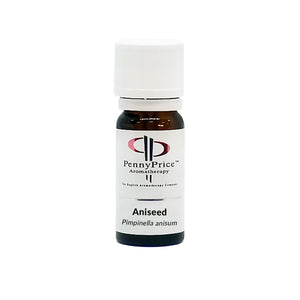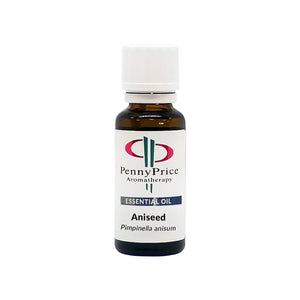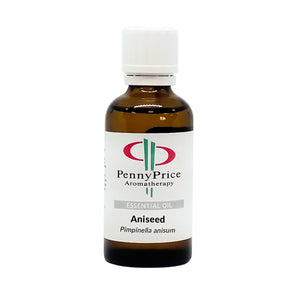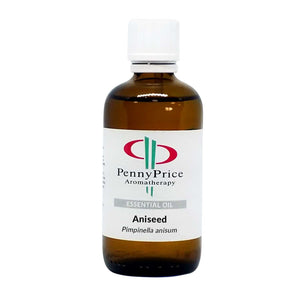Your Cart is Empty
- Shop
- Therapist Discount
- About Us
- FAQ, Blog & Downloads
- Courses
- Saturday Club
- Free Blending Series
- Product Catalogue
- Contact Us
- 01455 251020
- Login





Latin Name: Pimpinella anisum
Plant Family: Apiaceae (Umbelliferae)
Extraction: Distillation of herbs & seeds
Discover the soothing power of Aniseed Essential Oil! Used for flatulence, griping pains, and painful periods. An uplifting, warm, spicy-sweet scent reminiscent of liquorice. Excellent masking agent. A top note that blends harmoniously with lavender, orange, pine, and other spice oils.
The Middle East first gave us Aniseed and it is now found in the warmer parts of Europe as well as North Africa and the USA. Cultivated to about two feet it has delicate feathery leaves with tiny white blossoms. The greyish-brown seeds are crushed before distillation increasing the oil yield. Low temperatures tend to solidify the oil and may need to be hand warmed before use.
Aniseed, Natural Pure Essential Oil - Available in 10ml, 25ml, 50ml & 100ml.
Aniseed is widely used as a spice, Aniseed has been used for flatulence, griping pains and painful periods.
Aniseed essential oil is a colourless to pale yellow liquid with an uplifting, warm, spicy-sweet liquorice-like scent. Like an anise star, it is a good masking agent.
Aniseed is a top note it blends well with lavender, orange, pine and other spice oils.
Essential oils are very powerful and should be used with caution. Here are a few tips that you may find useful, although we advise that you consult a fully qualified, registered aromatherapist who will be able to advise you on the safe methods of use. Why not give us a ring at 01455 251020 or email info@penny-price.com if you are unsure we will be happy to help.
Inhalation: Undiluted essential oils may be inhaled from a tissue or a pillow (4-6 drops). Alternatively, they can be inhaled from a bowl of hot water (3 or 4 drops) or a diffuser (see table below), but avoid this if asthmatic. Never inhale essential oils directly from the bottle.
Shampoo and Bath Foam: Create unique aromatherapy bath foams or shampoos by mixing up to 30 drops of your own essential oil blend into 100ml of a suitable bath foam base or shampoo base.
Skincare Cream: Essential oils can be added to vegetable-based creams and then developed into facial products or topical creams. Do not add more than 15 drops of essential oil to 50ml of your base cream.
Pregnancy: Essential oils are best avoided during the first months of pregnancy. After the third month, many oils can be used safely and effectively. If in doubt, always consult a qualified aromatherapist.
Bath, Massage, Vaporiser: See the table below, which gives the correct amounts to use depending on age, and a brief guide on how to use.